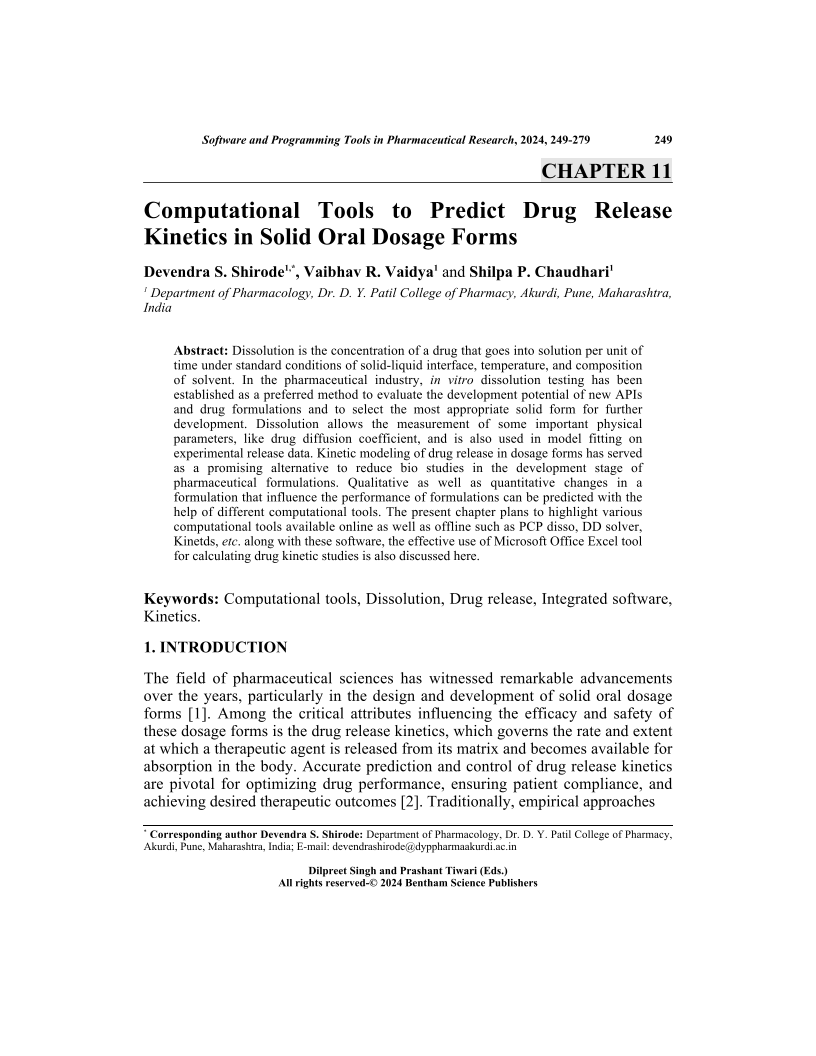Computational Tools to Predict Drug Release Kinetics in Solid Oral Dosage Forms

- Authors: Devendra S. Shirode1, Vaibhav R. Vaidya2, Shilpa P. Chaudhari3
-
View Affiliations Hide AffiliationsAffiliations: 1 Department of Pharmacology, Dr. D. Y. Patil College of Pharmacy, Akurdi, Pune, Maharashtra, India 2 Department of Pharmacology, Dr. D. Y. Patil College of Pharmacy, Akurdi, Pune, Maharashtra, India 3 Department of Pharmacology, Dr. D. Y. Patil College of Pharmacy, Akurdi, Pune, Maharashtra, India
- Source: Software and Programming Tools in Pharmaceutical Research , pp 249-279
- Publication Date: March 2024
- Language: English
Computational Tools to Predict Drug Release Kinetics in Solid Oral Dosage Forms, Page 1 of 1
< Previous page | Next page > /docserver/preview/fulltext/9789815223019/chapter-11-1.gif
Dissolution is the concentration of a drug that goes into solution per unit of time under standard conditions of solid-liquid interface, temperature, and composition of solvent. In the pharmaceutical industry, in vitro dissolution testing has been established as a preferred method to evaluate the development potential of new APIs and drug formulations and to select the most appropriate solid form for further development. Dissolution allows the measurement of some important physical parameters, like drug diffusion coefficient, and is also used in model fitting on experimental release data. Kinetic modeling of drug release in dosage forms has served as a promising alternative to reduce bio studies in the development stage of pharmaceutical formulations. Qualitative as well as quantitative changes in a formulation that influence the performance of formulations can be predicted with the help of different computational tools. The present chapter plans to highlight various computational tools available online as well as offline such as PCP disso, DD solver, Kinetds, etc. along with these software, the effective use of Microsoft Office Excel tool for calculating drug kinetic studies is also discussed here.
-
From This Site
/content/books/9789815223019.chapter-11dcterms_subject,pub_keyword-contentType:Journal105

